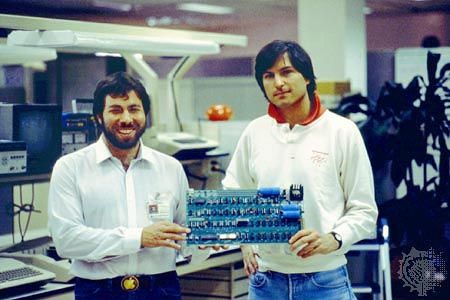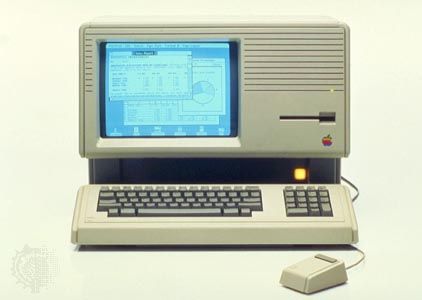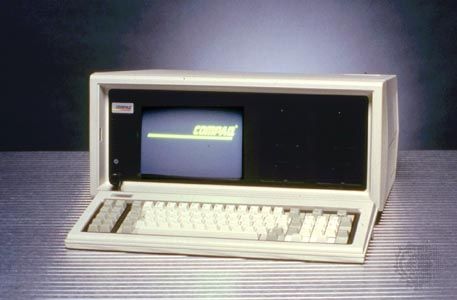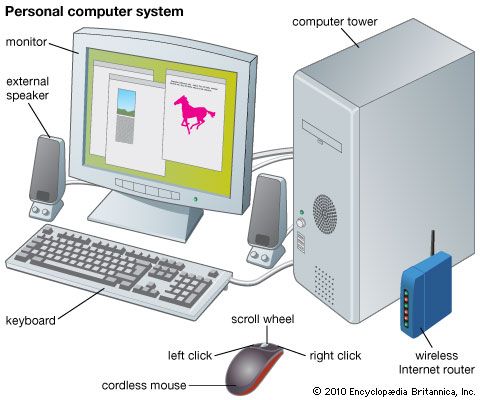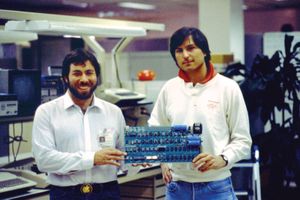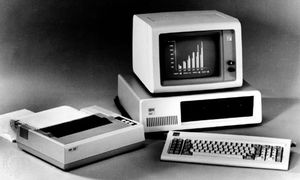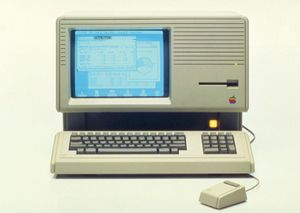personal computer
- Key People:
- Steve Jobs
- Steve Wozniak
- Bill Gates
- Larry Ellison
- Jony Ive
- Related Topics:
- laptop computer
- netbook
- microcomputer
News •
personal computer (PC), a digital computer designed for use by only one person at a time. A typical personal computer assemblage consists of a central processing unit (CPU), which contains the computer’s arithmetic, logic, and control circuitry on an integrated circuit; two types of computer memory, main memory, such as digital random-access memory (RAM), and auxiliary memory, such as magnetic hard disks and special optical compact discs, or read-only memory (ROM) discs (CD-ROMs and DVD-ROMs); and various peripheral devices, including a display screen, keyboard and mouse, and printer. See also computer: History of computing.
From hobby computers to Apple
Computers small and inexpensive enough to be purchased by individuals for use in their homes first became feasible in the 1970s, when large-scale integration made it possible to construct a sufficiently powerful microprocessor on a single semiconductor chip. A small firm named MITS made the first personal computer, the Altair. This computer, which used Intel Corporation’s 8080 microprocessor, was developed in 1974. Though the Altair was popular among computer hobbyists, its commercial appeal was limited.
The personal computer industry truly began in 1977, with the introduction of three preassembled mass-produced personal computers: the Apple Computer, Inc. (now Apple Inc.), Apple II, the Tandy Radio Shack TRS-80, and the Commodore Business Machines Personal Electronic Transactor (PET). These machines used eight-bit microprocessors (which process information in groups of eight bits, or binary digits, at a time) and possessed rather limited memory capacity—i.e., the ability to address a given quantity of data held in memory storage. But because personal computers were much less expensive than mainframe computers (the bigger computers typically deployed by large business, industry, and government organizations), they could be purchased by individuals, small and medium-sized businesses, and primary and secondary schools.
Of these computers, the TRS-80 dominated the market. The TRS-80 microcomputer came with four kilobytes of memory, a Z80 microprocessor, a BASIC programming language, and cassettes for data storage. To cut costs, the machine was built without the ability to type lowercase letters. Thanks to Tandy’s chain of Radio Shack stores and the breakthrough price ($399 fully assembled and tested), the machine was successful enough to persuade the company to introduce a more powerful computer two years later, the TRS-80 Model II, which could reasonably be marketed as a small-business computer.
The Apple II received a great boost in popularity when it became the host machine for VisiCalc, the first electronic spreadsheet (computerized accounting program). Other types of application software soon developed for personal computers.
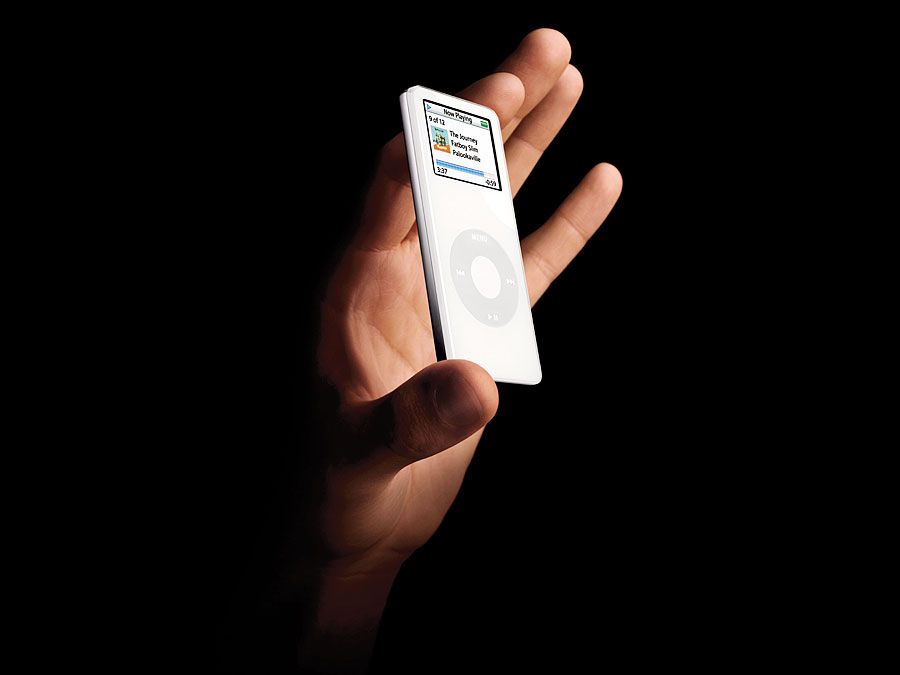
IBM PC
IBM Corporation, the world’s dominant computer maker, did not enter the new market until 1981, when it introduced the IBM Personal Computer, or IBM PC. The IBM PC was significantly faster than rival machines, had about 10 times their memory capacity, and was backed by IBM’s large sales organization. The IBM PC was also the host machine for 1-2-3, an extremely popular spreadsheet introduced by the Lotus Development Corporation in 1982. The IBM PC became the world’s most popular personal computer, and both its microprocessor, the Intel 8088, and its operating system, which was adapted from Microsoft Corporation’s MS-DOS system, became industry standards. Rival machines that used Intel microprocessors and MS-DOS became known as “IBM compatibles” if they tried to compete with IBM on the basis of additional computing power or memory and “IBM clones” if they competed simply on the basis of low price.
GUI
In 1983 Apple introduced Lisa, a personal computer with a graphical user interface (GUI) to perform routine operations. A GUI is a display format that allows the user to select commands, call up files, start programs, and do other routine tasks by using a device called a mouse to point to pictorial symbols (icons) or lists of menu choices on the screen. This type of format had certain advantages over interfaces in which the user typed text- or character-based commands on a keyboard to perform routine tasks. A GUI’s windows, pull-down menus, dialog boxes, and other controlling mechanisms could be used in new programs and applications in a standardized way, so that common tasks were always performed in the same manner. The Lisa’s GUI became the basis of Apple’s Macintosh personal computer, which was introduced in 1984 and proved extremely successful. The Macintosh was particularly useful for desktop publishing because it could lay out text and graphics on the display screen as they would appear on the printed page.
The Macintosh’s graphical interface style was widely adapted by other manufacturers of personal computers and PC software. In 1985 the Microsoft Corporation introduced Microsoft Windows, a graphical user interface that gave MS-DOS-based computers many of the same capabilities of the Macintosh. Windows became the dominant operating environment for personal computers.


